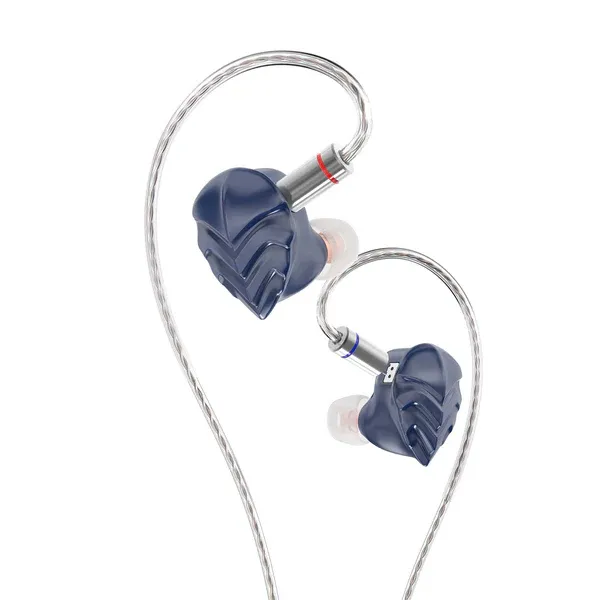Daybreakvs.Mk12 Turris
Sound & Specs Comparison
Information
Both IEMs are widely regarded in the audiophile community. See how they differ in terms of sub-bass response, upper mids, clarity, and overall tonality. Spider charts and rating breakdowns included.
Objective Comparison
Facts, details, stuff.
| General Info | Daybreak | Mk12 Turris |
|---|---|---|
| Brand | CrinEar | Hidizs |
| Country | – | – |
| IEM Description | – | The MK12 Turris brings a striking design together with a smooth and full-bodied sound. It’s an all-rounder that aims to please a broad range of musical tastes while offering style and substance in equal measure. |
| Price Level | 100 – 500 | 100 – 500 |
| Housing & Driver | ||
|---|---|---|
| Driver Config | – | Single Dyn. Driver |
| Driver Types | – | Dynamic Driver |
| Shell Material | Fully Filled Resin, Aluminium Nozzle | – |
| Cable | – | – |
| Technical | ||
|---|---|---|
| Freq Range | – | 10-45kHz |
| Impedance (Ω) | – | 32 |
| Sensitivity (dB) | – | 111 |
| Crossover | – | – |
| Platform Info | ||
|---|---|---|
| Comments | 0 | 1 |
| Visit Count | 135 | 15 |
| External Reviews | 0 | 1 |
Meta Ratings
Especially for complex musical passages, Mk12 Turris handles layering and imaging clearly more confidently and precisely. For comfort fit, It performs softly better (7.3 vs 6.5). From the connector housings to the shell seams, It demonstrates faintly tighter tolerances and higher production standards. From the case design to ear tip variety, Daybreak provides a readably more thoughtful unboxing experience.
| Daybreak | Mk12 Turris | |
|---|---|---|
| Sound | 6.5 | 7.8 |
| Comfort Fit | 6.5 | 7.3 |
| Build Quality | 7.0 | 7.5 |
| Stock Cable | – | 4.8 |
| Accessories | 6.0 | 5.0 |
Sound Characteristics
Mk12 Turris delivers a tighter sub-bass response, controlling low-end rumble with more precision than Daybreak (8.5 vs 5.5). It enhances basslines with a more energy and grip, giving them a livelier feel compared to Daybreak (8 vs 6). It adds c more body and slam to bass hits, which makes it feel more physical than Daybreak (8.5 vs 6). It renders lower mids s more naturally, giving male vocals and instruments a fuller tone than Daybreak (9 vs 6). In the upper mids, It sounds a clearer and more articulate, highlighting vocals and lead instruments better than Daybreak (8 vs 6.5). It offers s greater shimmer and nuance in the lower treble, revealing micro-details that Daybreak misses (9 vs 6.5). The upper treble of It extends m further, offering more sparkle and openness than Daybreak (9 vs 7). It paints a d broader sonic landscape, offering better instrument positioning across the stage (8 vs 6). It extracts low-level details c more effectively, helping subtle nuances emerge clearer than on Daybreak (8.5 vs 6). It separates instruments d more distinctly, helping complex passages remain coherent where Daybreak blends them (8.5 vs 6.5). It avoids frequency masking m more successfully, preserving clarity across the spectrum better than Daybreak (8.5 vs 6.5). The note presentation is a fuller and more tactile on It, giving instruments a stronger physical presence than Daybreak (8.5 vs 6). It delivers m stronger slam and physicality, making drums and transients hit harder than Daybreak (7.5 vs 5.5). It controls harsh sibilant peaks c more effectively, making vocals smoother than on Daybreak (9.5 vs 6). Timbre on It sounds a more realistic and natural, whereas Daybreak feels slightly more artificial or colored (8.5 vs 5). It achieves s better tonal neutrality, avoiding colorations present in Daybreak (8.5 vs 5.5). It portrays textures in vocals and strings with a more realism, enhancing emotional depth over Daybreak (8 vs 5).
| Daybreak | Mk12 Turris | |
|---|---|---|
| Sub Bass | 5.5 | 8.5 |
| Bass | 6.0 | 8.0 |
| Bass Feel | 6.0 | 8.5 |
| Lower Mids | 6.0 | 9.0 |
| Upper Mids | 6.5 | 8.0 |
| Lower Treble | 6.5 | 9.0 |
| Upper Treble | 7.0 | 9.0 |
| Sound Stage Width | 6.0 | 8.0 |
| Detail | 6.0 | 8.5 |
| Layering | 6.5 | 8.5 |
| Masking | 6.5 | 8.5 |
| Note Weight | 6.0 | 8.5 |
| Slam | 5.5 | 7.5 |
| Sibilance | 6.0 | 9.5 |
| Timbre Color | 5.0 | 8.5 |
| Tonality | 5.5 | 8.5 |
| Texture | 5.0 | 8.0 |
Tonal Signature
// Nothing to compare yet.

